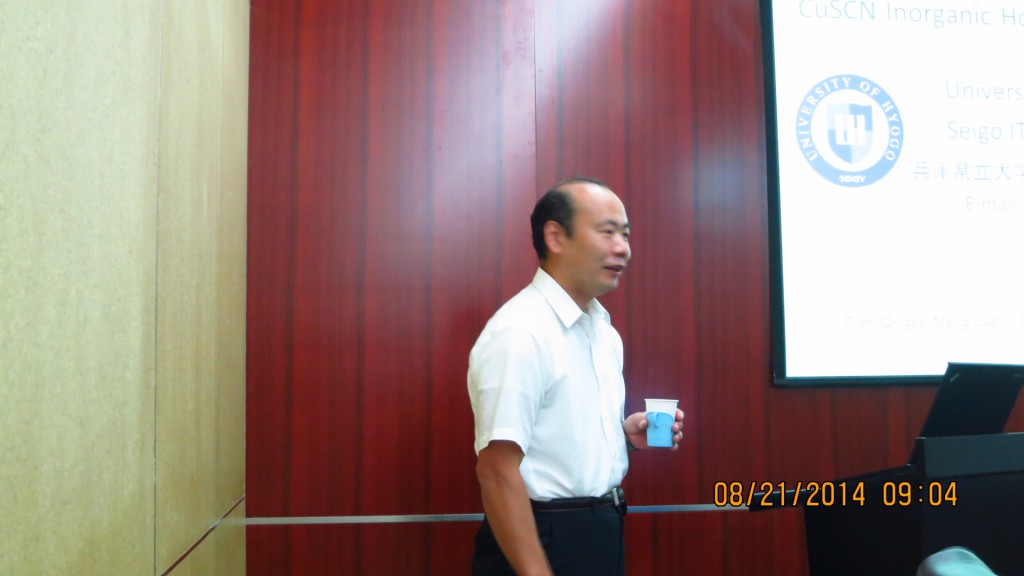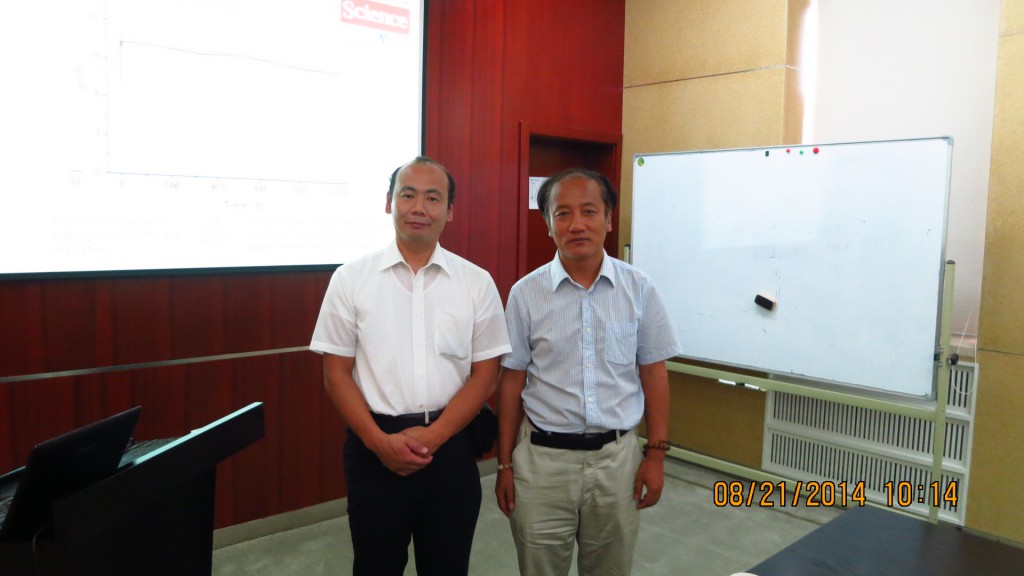日本Seigo Ito 教授应邀报告——光电化学系列讲座(五十)
8月21日上午九点,日本宾库大学Seigo Ito 教授应清洁能源实验室主任孟庆波研究员邀请,在中科院物理所M楼238做了题为CH3NH3PbI3 Perovskite Solar Cells using CuSCN Inorganic Hole Transmitting Layer的精彩报告。


报告人简介:Professor Ito obtained his PhD (Engineering) in Department of Chemistry and Biochemistry, School of Engineering, the University of Tokyo, Tokyo, Japan, 2000. He worked as a Post Doctoral Researcher in Faculty of Science, Kwansei Gakuin University, Japan From December, 2001 to March, 2002. After that, he worked as a researcher in Research Institute of Innovative Technology for the Earth (RITE), Japan From April, 2002 to January 2003. Then he worked as inorganic chemist at ICMB-LPI, Ecole Polytechnique Fédérale de Lausanne (EPFL), Switzerland. From February, 2003 to August, 2006. From October, 2007, He become Professor of University of Hyogo.
报告摘要:Despite the rapid increase in efficiency of the hybrid organic-inorganic methylammonium lead halide perovskites (CH3NH3PbI3, X = Cl-, Br-, I-) solar cells, the hole transporting material (HTM) used were mainly limited to organic compounds, the start-of-the-art 2,2’,7,7’-tetrakis(N,N-di-p-methoxyphenylamine)-9,9’-spirobifluorene (spiro-MeOTAD) and conducting polymers. Compared to organic HTMs, inorganic p-type semiconductors appear to be an ideal choice from the point of view of high mobility, stability ease of synthesis and low cost. Here, we report that combining the perovskite CH3NH3PbI3 with CuSCN as p-type HTM lead to solar cells with very high power conversion efficiency (12.4%) under full sun illumination. Moreover, to improve the stability, Sb2S3 layers were inserted at the interface between TiO2 and CH3NH3PbI3 perovskite to be CH3NH3PbI3 solar cells using inorganic hole transporting material (CuSCN) . The CH3NH3PbI3 layer was spin-coated by one-drop method on nanocrystalline TiO2 layer. During the light exposure test without encapsulation, the CH3NH3PbI3 solar cells without Sb2S3 deteriorated to zero efficiency in 12 h and were completely changed from black to yellow, because the perovskite CH3NH3PbI3 was changed to hexagonal PbI2. With Sb2S3, on the other hand, the CH3NH3PbI3 solar cells became stable against light exposure without encapsulation, which didn’t change the crystal structure and the wavelength edges of absorption and IPCE. Therefore, it was considered that the degradation can occur at the interface between TiO2 and CH3NH3PbI3.
